Caring for Corn Snakes
Love reptiles? Want a first time pet? Have a read.
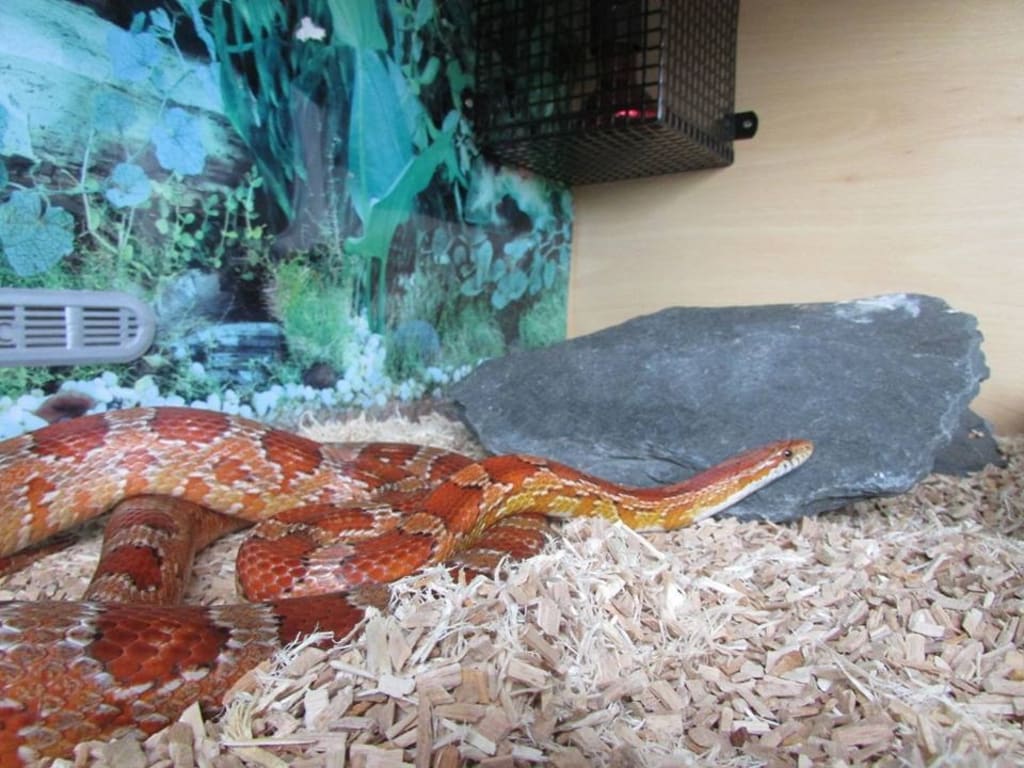
Corn snakes are perfect for a first time pet if you’re beginning to want to have reptiles as pets, or even if you just love snakes!
Corn snakes are very friendly and make lovely pets. They can grow up to five feet. They do not get very large as an adult corn snake will only weight up to 900 grams.
If you decide you’d like a corn snake the choosing process is very important, this is because you need to know if this is the right pet for you. You can go to your local pet shop that sells reptiles and ask to handle a few of them. If you have decided to buy a corn snake I would suggest buying them from a baby as both you and the snake will get used to each other.
When handling the corn snakes you need to be sure that you will be able to look after them. They do not take a lot of looking after but there are a few things you need to know before committing to them. First being that you’d need to feed them rodents. These are usually frozen but you’d need to let them thaw fully before you feed them to your snake.
Corn snakes first start off eating baby mice called pinkies then, as they grow you will be able to buy small mice, then medium mice and up to large mice. They are constrictor snakes which means that they catch their prey and squeeze it. Therefore, you may want to give your snake the feeling that it is catching its own food. You can offer it to the snake by holding it by the tail and dangle the mouse in front of the snake so it can strike the mouse, grab it, and go to work at swallowing its meal. However, like my own snake, you may find that they do not like this method and in this case you can simply place the mouse in an area where your snake can strike at it for themselves.
WARNING
You will need to keep the mice in your freezer so make sure you have a dedicated area or box for them so that people don’t go looking for something and come across a mouse as some people aren’t fond of dead rodents in their freezer!
Thenext thing you will need to be aware of is their lifespan. They can live up to five to 10 years—or even longer if given proper care, so please make sure you are ready for a long-term commitment.
You will also need to make sure you handle your snake as often as you can. This is so that they get used to you otherwise they could become viscous and strike for your hand. (Please be aware that corn snakes do not have big teeth at all so it wouldn’t hurt if they bit you however it isn’t a good behaviour for your snake to have.) Therefore, you need to make sure you are bonding well by holding them as much as you can.
You can even give your snake a bath. This helps with shedding if they’re having difficulty and it gives them a different environment to play in. Only fill the bath to a few centimeters and let your snake move around for a while.
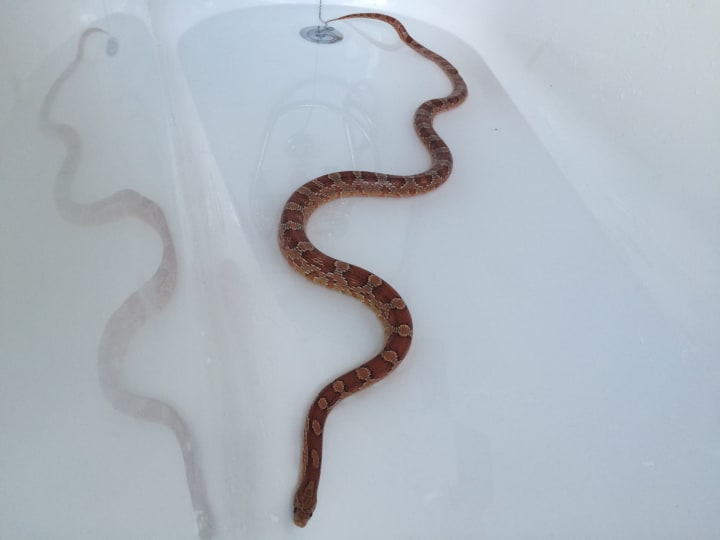
When you're ready to choose your corn snake, look for one with no cuts or abrasions and make sure they have bright, alert eyes and a flicking tongue. These are all signs of a healthy snake!
Your snake will need a safe and secure place to live. When they are babies I would suggest a small plastic tank with a mesh lid. This is because if you put them in a large vivarium too early they might feel threatened in such a large environment and become anxious.
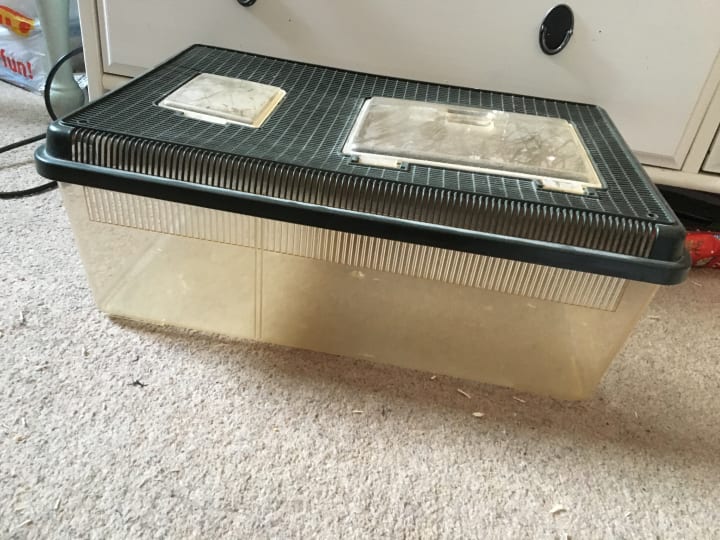
Once your snake starts to get bigger you will be able to get a large vivarium so that your snake will not feel cramped and will have enough space to roam around in. A 30 to 40 gallon tank should be large enough for your corn snake to move and grow in. You can find these page vivariums in most pet stores or online pet stores.
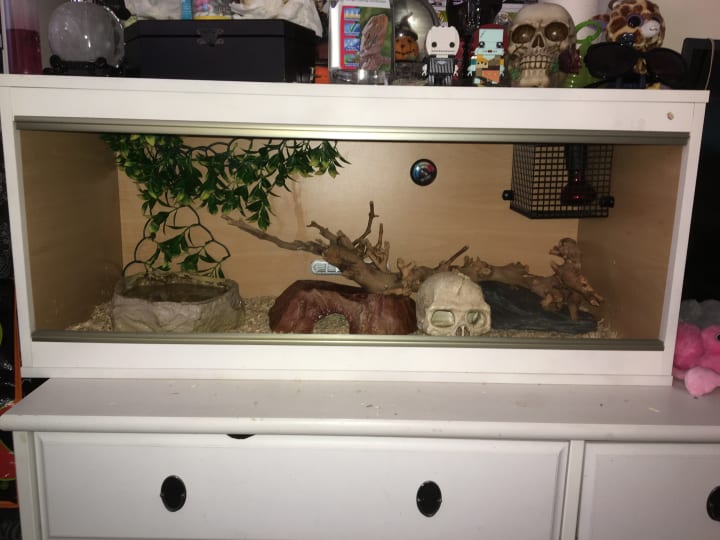
Corn snakes need to be kept in a temperature of 75 to 85 degrees Fahrenheit, which is pretty easy to achieve with a warming lamp set over the tank. You can also get a dial thermometer which can be stuck in the tank. The tank should have a warm zone and a cool zone, with hiding areas as corn snakes like to hide. Your local pet shop will have a selection to choose from.
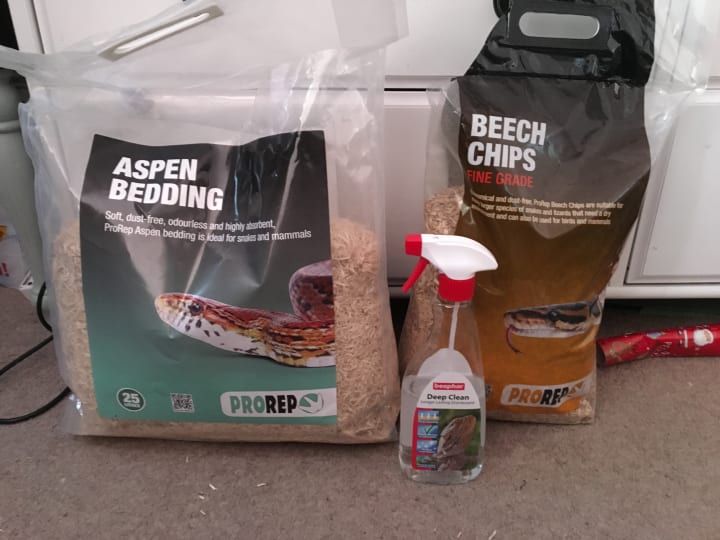
To keep your corn snake’s tank clean and safe use reptile specific bedding and disinfectant. You can get these in most pet stores. Aspen bedding and beech chips keep the tank hygienic and safe for your corn snake.
To keep your corn snake happy and stress free, it’s a great idea to fill the tank with plants, branches for curling around on, and boxes to hide in. Snakes can get traumatized when they have no place to hide, so give your snake both room to move and accessories to feel secure. Just make sure not to use live plants, as the fertilizer in the soil can be harmful to the snake you can also use rocks and treated wood available in pet stores.
There are different colours of corn snakes callers morphs which breeders do through selective breeding. You can find out all about online. There are a few morphs I’d like to talk about including; an albino corn snake, they lack melanin, or black pigment and are usually bright red, orange, yellow and white. Their eyes are also red, orange or pink.
There is also a lavender corn snake, this morph was first produced in the 1980s, as the result of breeding a snow corn snake with a wild-caught female. These snakes are dark grayish to bright pastel lavender.
Whatever corn snake you decide to have as a pet, you will be able to look after them all the same and they are very calm and easy to care for pets and if you’re a snake lover you’ll fall in love instantly with these adorable reptiles.
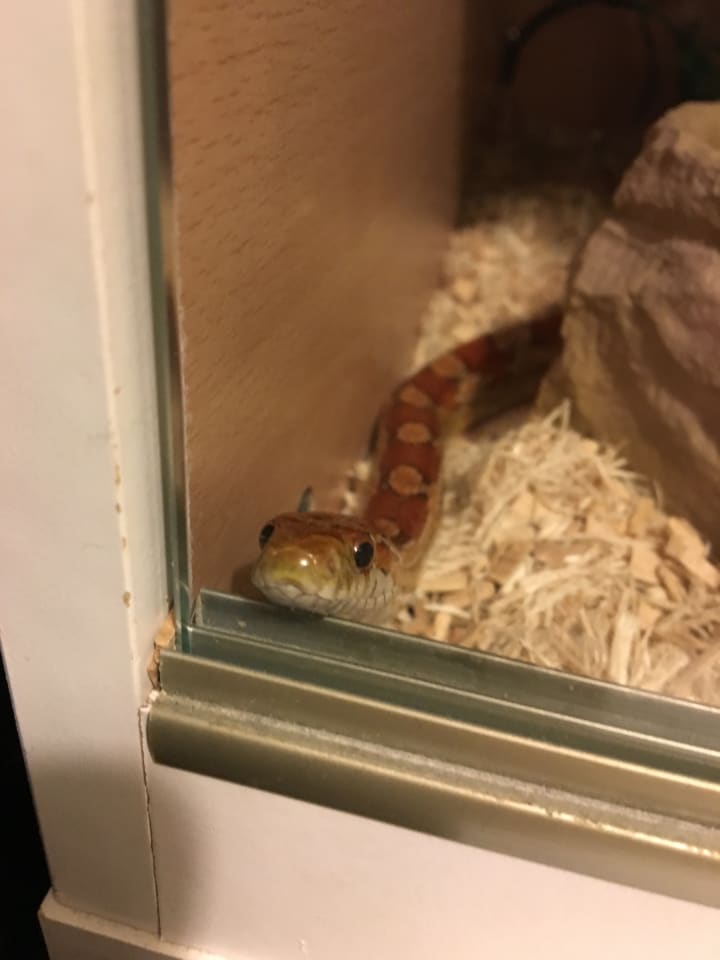
Thank you for reading :)
About the Creator
Abby Grace
Hi I’m Abby, I have a passion for all things gothic. I have a passion for photography and I love my gorgeous corn snake, Topaz ❤️
Enjoyed the story? Support the Creator.
Subscribe for free to receive all their stories in your feed. You could also pledge your support or give them a one-off tip, letting them know you appreciate their work.




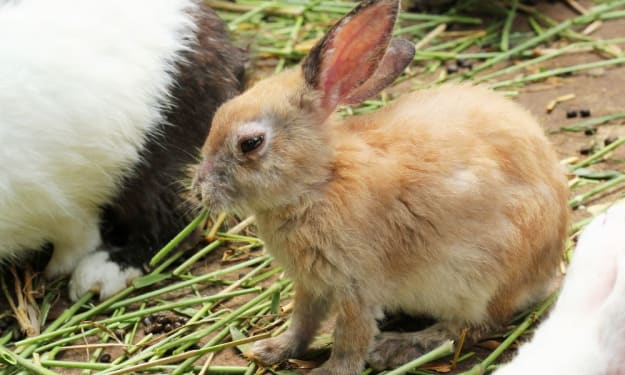

Comments
There are no comments for this story
Be the first to respond and start the conversation.